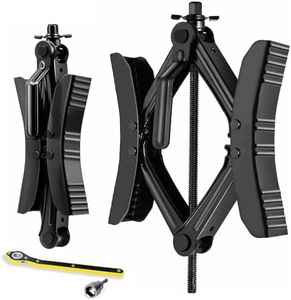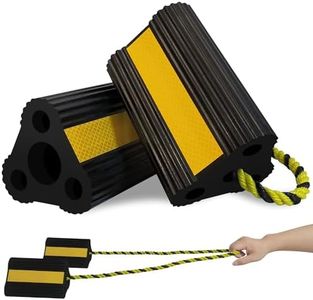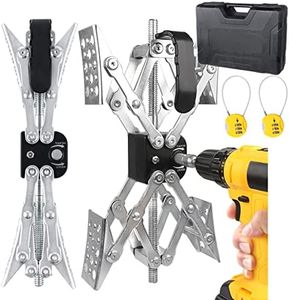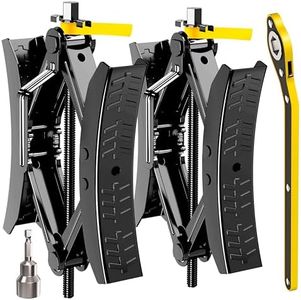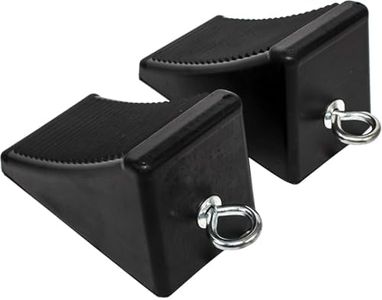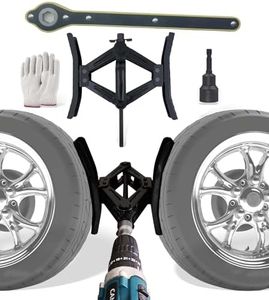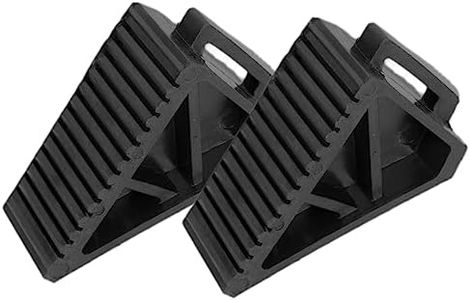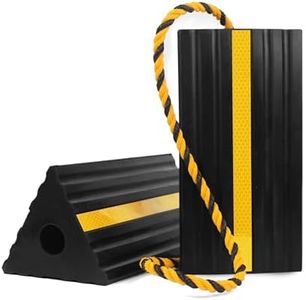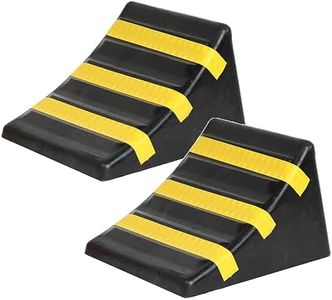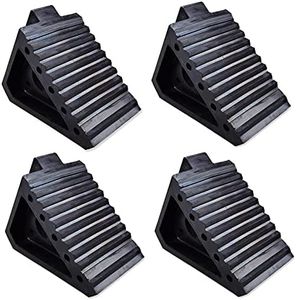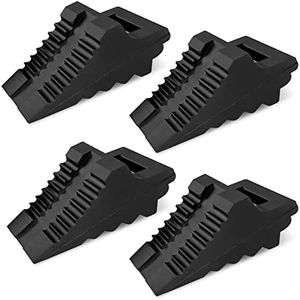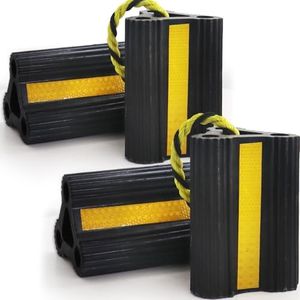We Use CookiesWe use cookies to enhance the security, performance,
functionality and for analytical and promotional activities. By continuing to browse this site you
are agreeing to our privacy policy
10 Best Rv Wheel Chocks
From leading brands and best sellers available on the web.Buying Guide for the Best Rv Wheel Chocks
When choosing RV wheel chocks, your main goal is to ensure the safety and stability of your RV while it's parked. Wheel chocks are designed to prevent unwanted rolling, especially on sloped or uneven ground. The right chocks help you relax and enjoy your stay without worrying about your vehicle moving unexpectedly. To pick the best ones, start by understanding the main features and picking the specs that fit your RV's size, weight, and typical parking conditions.MaterialWheel chocks are made from materials like rubber, plastic, or metal. This spec is important because it affects the chock’s durability, grip, and weight. Rubber chocks are popular because they grip well and usually last long, while plastic ones are lighter but may slip on smooth surfaces or break if stressed. Metal chocks are extremely durable but heavy and can scratch surfaces. If you often park on paved and flat surfaces, plastic or rubber works fine. For heavy RVs or rough terrain, rubber or metal is safer. Choose a material based on your typical usage and whether you'll carry them often by hand.
Size and Weight CapacityThe size and weight capacity of a chock determine how much force it can resist and what size tire it will fit. This is crucial for safety—using a chock that's too small or light for your RV can result in failure. Generally, chocks are divided into small (for trailers or lightweight RVs), medium (for mid-sized RVs), and large (for heavy-duty motorhomes). Check your RV's tire diameter and overall weight, and pick a chock rated comfortably above that weight for peace of mind.
Tread Pattern and GripThe tread pattern on a chock’s surface and bottom affects its ability to stay in place and hold the tire securely. Chocks with deep grooves or textured surfaces offer more friction and grip, minimizing the chance of slipping, especially on smooth or wet surfaces. For frequent use on gravel or wet conditions, look for a chock with aggressive tread patterns. If you usually park on dry and level pavement, less aggressive tread may be satisfactory.
Ease of HandlingEase of handling relates to how simple it is to place, remove, and transport the chocks. Features like handles, ropes, or lightweight construction make chocks easier to maneuver, which is helpful if you use them often or have physical limitations. If your chocks will need to be repositioned frequently, or you prefer not to stoop down too far, opt for chocks with built-in handles or carrying cords for convenience.
Stability and StackabilitySome chocks are designed to be stackable or interlock for added security and easy storage. This can be important if you need extra stability for big RVs, or if storage space is tight. If you need more hold than a single chock offers, consider stackable units or those designed to be used in pairs. Choose according to how much stability you think you’ll need and how easily you want to store them when not in use.
